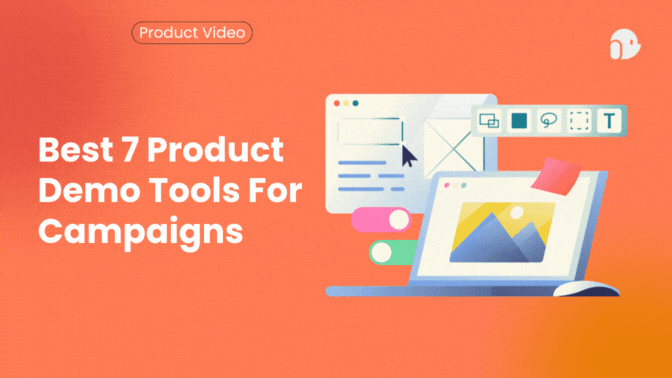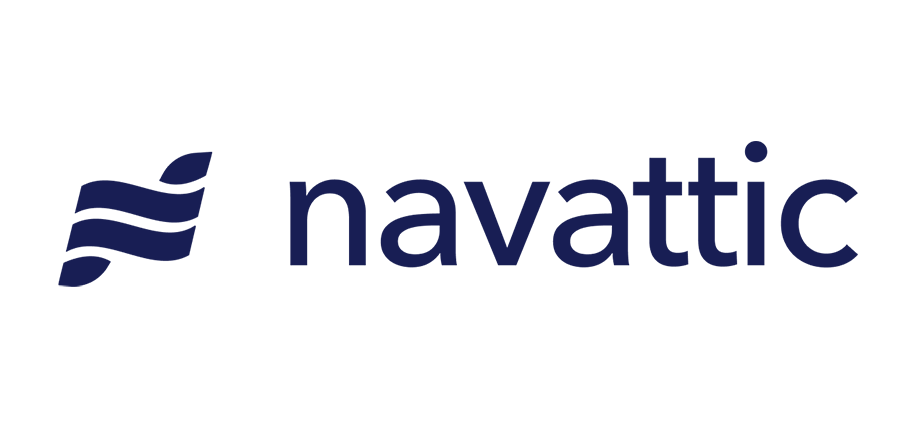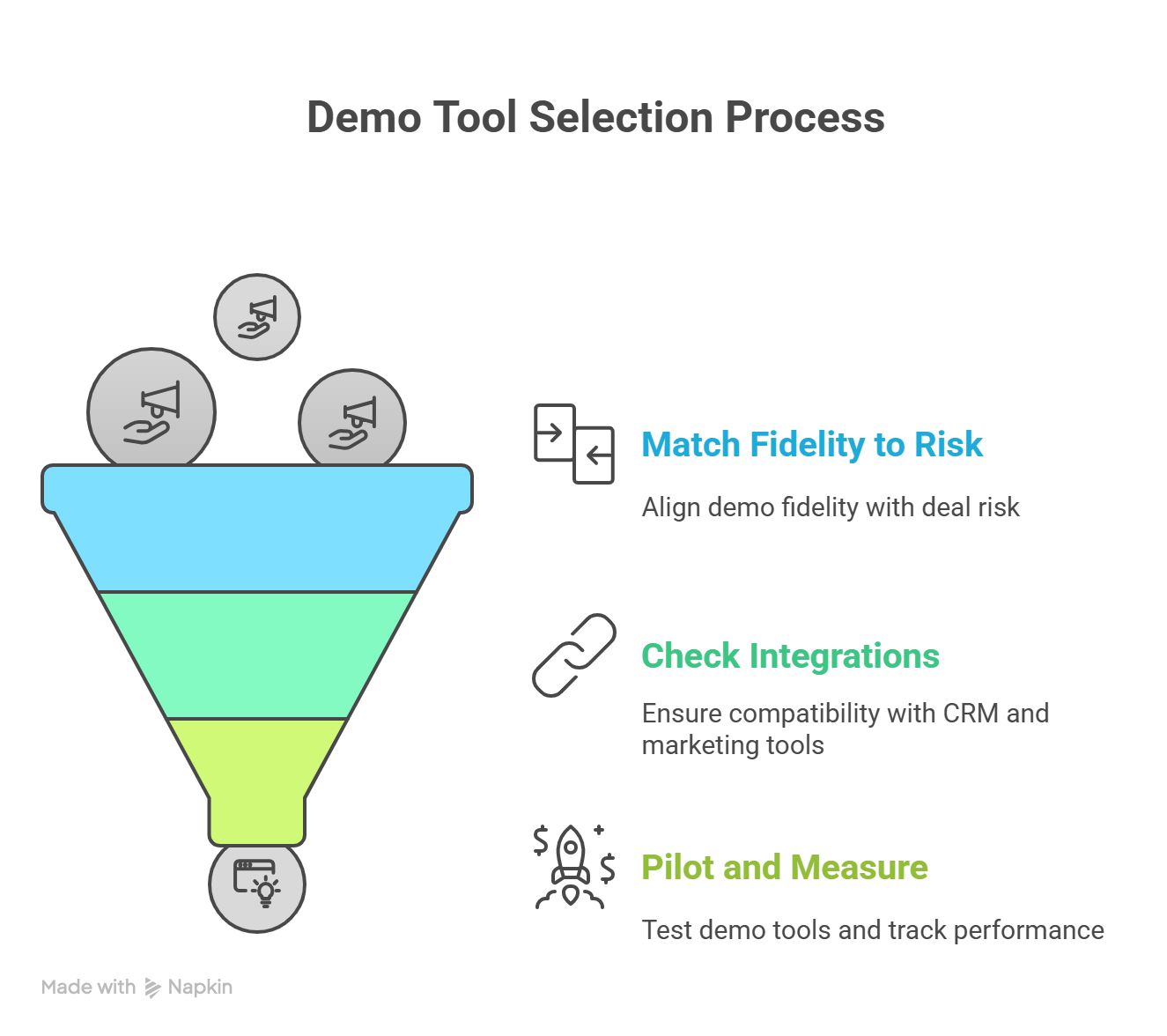Best 7 Product Demo Tools For Campaigns

Modern B2B buyers expect to explore your product on their own terms. Static screenshots and long product pages just won’t cut it anymore. In this post, you’ll get:
- A quick tour of the best tools for product demos across different campaign goals.
- A clear recommendation for a personalized product video maker for marketing workflows.
- Pricing notes, pros/cons, and practical tips to pick the right product demo software for SaaS campaigns.
Let’s dive in, but first, one honest admission: choosing a demo platform is part art, part math, and a little bit of trying before you buy.
1. PuppyDog: Best AI-Powered Demo Tool for Personalized Video Demos

What it does (quick): PuppyDog.io automatically turns screen captures and recordings into hyper-personalized product video playlists. Think less manual recording, more AI agents doing the heavy lifting.
Key features: AI-generated scripts, voiceovers, AI avatars, Chrome screen recorder, synthetic demo data, automated playlists.
Pricing: Free trial, Pro $249–$499/mo (limits on contacts and videos); Scale $749–$999/mo; Enterprise custom.
Pros: Scales personalized video quickly, saves recording time, offers strong automation, and is ideal for adoption/training.
Cons: Less suitable for deeply interactive click-through demos.
Best for ( Why it’s on top ): If your goal is to send tailored video narratives to prospects or customers at scale, PuppyDog shines. Its AI scripts, human-like avatars, and synthetic data safeguards make it a powerful choice for marketing, sales enablement, and onboarding teams.
Try it: If you want to experiment with an AI-driven demo maker, you can have a free trial of our demo maker.
2. Navattic: Best for Self-Serve Website Demos (Interactive Product Demo Tools For ToFu / PLG)

What it does: No-code HTML capture to create guided tours that live on your website. Great for converting anonymous visitors into engaged leads with guided, interactive experiences.
Pricing: Free starter; Base plan around $500/mo.
Pros: Quick to implement, excellent analytics, and CRM integrations.
Cons: Not great for full video walkthroughs or heavy customization.
Best for: High-volume top-of-funnel campaigns, PLG strategies, and teams that want interactive product demo tools embedded on their site.
3. Storylane: AI-Powered Demo Tools for Personalization

What it does: No-code guided tours with AI features for scripts, voiceovers, and instant translation.
Pricing: 14-day trial; paid from ~$40/user/month depending on features.
Pros: Strong AI-assisted personalization and good analytics.
Cons: Higher tiers required for advanced HTML features.
Best for: Marketing teams that need scale plus a personal touch, another strong example of AI-powered demo tools that boost relevance and localization.
4. Supademo: For Speed, Tutorials & Internal Training (Lightweight Product Demo Software For SaaS Teams)

What it does: Fast, click-based screen-capture demos ideal for how-tos and internal enablement.
Pricing: A free plan is available; paid plans start at approximately $27/user/month.
Pros: Fast creation, multi-language voiceovers, and affordable.
Cons: Limited interactive fidelity, not enterprise-grade.
Best for: Onboarding, CS enablement, and quick launch collateral, useful as low-cost product demo software for SaaS teams that need rapid content.
5. Demostack: For Enterprise-Grade Sandboxed Demos (High-Fidelity Product Demo Software For SaaS)

What it does: Full front-end and back-end cloning with synthetic data for secure, high-fidelity demos.
Pricing: Enterprise pricing, often cited starting around $55,000/year (custom).
Pros: Extremely secure, reliable for high-ACV deals.
Cons: High cost, more complex implementation.
Best for: Large deals that need exact replication, governance, and risk mitigation — a go-to when you need enterprise-grade product demo software for SaaS.
6. Reprise: Best for Code-Level Presales Control (Engineering-First Interactive Product Demo Tools)

What it does: Code-level overlays and detailed demo engineering for technical sales cycles.
Pricing: Custom, often starting near $1,000/mo depending on scale.
Pros: Fine-grained control, great for SEs.
Cons: Steeper learning curve and setup burden.
Best for: Sales engineers and presales teams handling complex product demos, an interactive product demo tool for technically complex workflows.
7. Arcade: Best for Social-Style, Viral Product Storytelling (Product Video Maker For Marketing & Social)

What it does: Create beautiful microsite demos and social-friendly product narratives.
Pricing: Free plan; paid from ~$32/user/month.
Pros: Visually polished, shareable, designed for marketing velocity.
Cons: Limited depth; advanced interactivity reserved for Enterprise tiers.
Best for: Marketing teams focused on social campaigns and brand storytelling, a nice product video maker for marketing when your goal is buzz and shareability.
How to Choose the Right Demo Tool (Best Tools For Product Demos: Quick Checklist)
- Define the campaign stage:
- ToFu → prioritize speed and no-code interactive product demo tools.
- Mid-funnel → personalization and CRM integration (look for AI-powered demo tools).
- Closing → fidelity & security (invest in sandbox/cloning product demo software for SaaS).
- ToFu → prioritize speed and no-code interactive product demo tools.
- Match fidelity to risk: If you’re closing enterprise deals, invest in cloning or sandbox tools. If you’re running paid ads, a quick, tailored product video maker for marketing might be enough.
- Check integrations: Does it push engagement data into your CRM or marketing stack?
- Pilot fast, measure quickly: Start small, track completion rates, and map demos to pipeline conversion.

Rule of thumb: A dual-tool strategy often wins — one fast, low-cost creator for volume (e.g., Supademo, Arcade) and one high-fidelity tool for deal-closing (e.g., Demostack, Reprise).
Closing: Pick the Right Demo, Not the Trendiest
Interactive demos are no longer optional; they’re central to modern GTM. But the right choice depends on your goals: speed, personalization, or enterprise security. If personalized video at scale is your priority, PuppyDog.io is a compelling first stop, and you can explore its demo maker or learn more
Frequently Asked Questions (FAQs)
What are product demo tools?
Product demo tools are software platforms that help teams create, share, and analyze interactive or video-based product demonstrations. These include interactive product demo tools for guided tours, AI-powered demo tools that auto-generate scripts and voiceovers, and a dedicated product video maker for marketing solutions.
How do product demo tools enhance campaign effectiveness?
They bring your product to life: interactive walkthroughs and personalized videos increase engagement, shorten buyer evaluation time, and capture analytics that inform follow-up. Use AI-powered demo tools to scale personalization, or choose high-fidelity product demo software for SaaS when security and accuracy matter.
Are these tools suitable for all business sizes?
Yes. Startups can use an affordable product video maker for marketing and entry-level interactive product demo tools (like Supademo or Arcade). Mid-market and enterprise teams will benefit from product demo software for SaaS with sandboxing or cloning (like Demostack) and specialized AI-powered demo tools for personalization at scale.
Further Reading
- “12 Engaging Product Demo Video Examples to Learn From” examines how demo videos engage and convert viewers.
- “Interactive Product Demos: Benefits and Best Practices” explores why interactive demos boost conversion and buyer understanding.
- “What is a Product Demo & Why is it Important?” offers an overview of product demos and their impact on sales effectiveness.

Sarah Thompson is a storyteller at heart and Business Developer at PuppyDog.io. She’s passionate about creating meaningful content that connects people with ideas, especially where technology and creativity meet.






